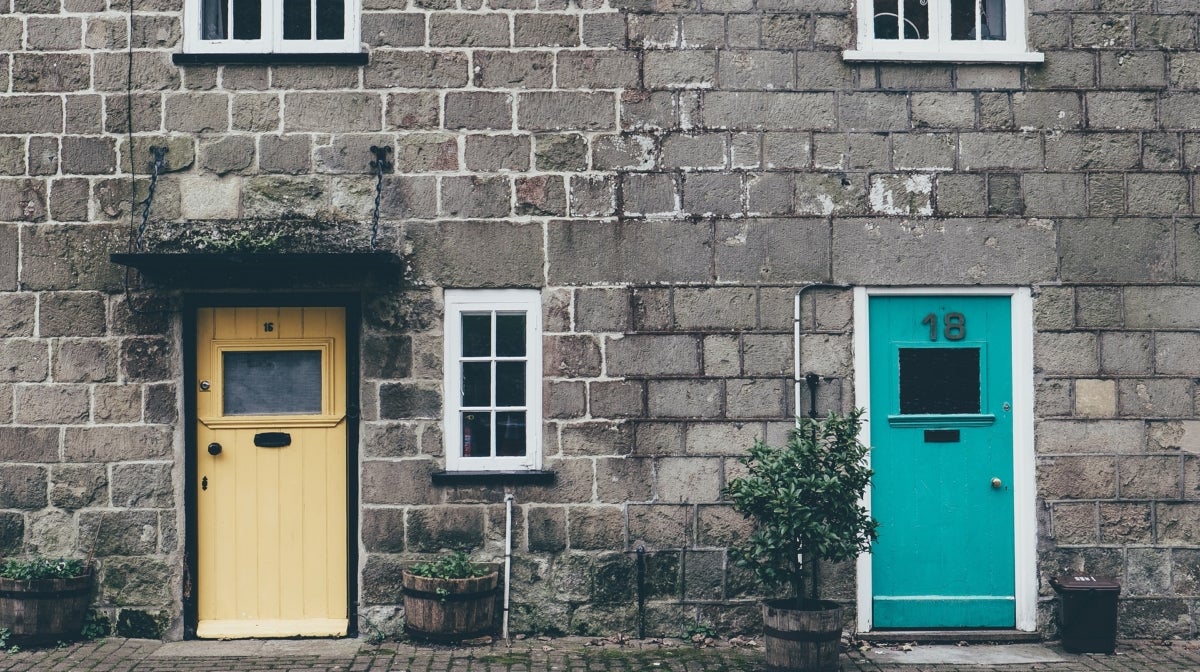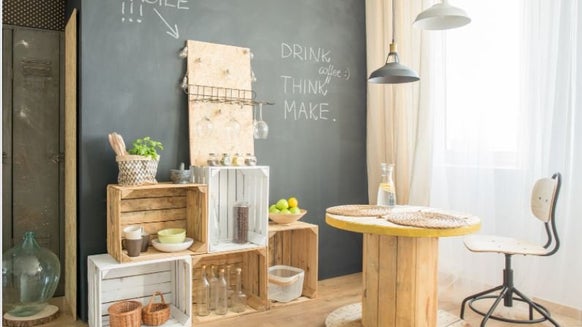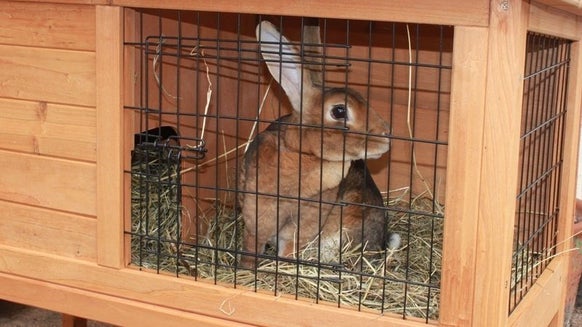Greening Grey Britain – Turn a grey area green

What would you say if I told you that you could have an impact on reducing flooding in your area? Or that you could reduce your gas or electricity bill? And you could do both with plants. Did I get your attention? Good. The RHS is launching a campaign this year to urge Brits to add plants, trees, climbers or even plant pots to their front gardens; and with parking space at a premium, it's safe to say Greening Grey Britain has its work cut out!
The facts
Let’s lay the facts on the table. Britain is a country of keen (sometimes reluctant) gardeners. However, between 2005 and 2015 the percentage of homes that had their entire front garden paved over has increased from 7% to 24%; that is one in 4 front gardens. London is the worst, with half of all front gardens totally paved over; that is an increase of 36% in the last 10 years.
On the other hand, the North-East is the only region in the UK that has reduced the number of completely paved over gardens. In fact, there has been a 30% increase in the number of front gardens where half of the plot is devoted to plants.
In 2005, 7% of households had the entirety of their front garden paved, concreted or gravelled. In 2015 this figure had doubled to 24%. That means that one in 3 front gardens have no plants at all.

Greening Grey Britain not only aims to raise awareness of the environmental changes; Lauriane Suyin Chalmin-Pui is a PhD student from Sheffield University who, in conjunction with the Royal Horticultural Society, is investigating the influence of front gardens on health and well-being. We asked Chalmin-Pui how she came to choose this topic:
“My research is driven by an interest in social engagement with nature and, specifically, the socio-cultural value of urban green space. The current focus lies in the dual context of the increasingly recognised impact of nature and green spaces on physical and mental health, and the growing trend to pave over front gardens for off-road parking. Indeed, plant cover in UK front gardens has decreased by as much as 15% in the past 10 years.” Chalin-Pui is now investigating whether introducing plants to gardens currently paved over will improve the well-being of residents and the wider community.
Why shouldn’t you have a concrete front garden?
Research has proven that paving over our front garden affects far more than the environment on our doorstep, as laying down hard surfaces contributes to flooding and increases local temperature. You may think that paving over your garden doesn’t really matter as it is just one house. However, the problem comes when the neighbour opposite the road also paves over their garden. By doing this you are tripling the width of the road.
In the event of rain, gardens can soak up the water, however paving, tarmac and concrete are less porous and they increase the amount of rainwater that runs off by as much as 50%. The excess then goes back up people’s front drives and floods their homes, as the drains can’t always cope with the excess in a storm, for example.

Conversely, the lack of vegetation can also increase the local temperature, known as the Heat Island Effect. This results in poorer air quality, localised weather conditions and a hotter climate. This will in turn prompt residents to invest in air-con units, thus contributing to the problem.
Urban temperatures are not regulated as effectively without vegetation on our streets because hard surfaces absorb the heat during the day and release it at night; making it hotter and more difficult to sleep. Additionally, the removal of grass and trees means that dust is no longer absorbed and there are fewer places for birds to nest in and insects to feed on.
Furthermore, trees and plants intercept heavy rain, which slows down the run off and reduces the pressure on drains, especially during summer storms (you can find out more about how storms get their names). A 10% increase in vegetation would help control the predicted climate change.
What can you do to help the cause?
Many things, actually! The RHS will share ideas throughout the year; you can find out more about the whole initiative on the Greening Grey Britain website.
The issue of parking is important, but with some research there are better options that will hold the weight of your car but will also let the water through; for example, brick paving. The interlocking shape ensures rainwater can penetrate the tiny gaps.
Also consider what percentage of your front garden needs to be paved over. Can you have a deep flower bed with plenty of soil? How about green walls such as trees, hedges and climbers? These can reduce the cost of heating and cooling, this reducing your utility bill up to thirty percent.

Won’t climbers weaken the house?
We asked the RHS whether climbers could damage the outer walls of our homes. They assured us that climbers do not harm masonry that is in good condition, and where the masonry is weak or needs pointing a builder should be able to remedy matters, thus allowing climbers to grow. However, there are some climbers which grip to walls such as ivy and climbing hydrangeas which can be a nuisance. Other climbers twist and twine. For these, wires or trellis have to be used to hold them in place – clematis and roses are popular examples of this.
They also suggest wall shrubs as an-easy-to grow alternative. Ceanothus, Magnolia grandiflora, winter flowering jasmine and pineapple broom are widely used. They will most likely require wires to prevent them from flopping.
Potted plants also have their uses
They not only add colour to your home, but planted up containers are an excellent way of soaking up water when it rains heavily. The RHS confirms that the potting media absorbs water and delays the flow of rain to drains, lessening the peak flows that lead to flash floods.
Additionally, planting herbs and nectar-rich plants will also attract important pollinators like butterflies, ladybirds, bees and other insects, which in turn attract birds and small mammals. Also, if you group planters together you provide shelter between them for wildlife.
What impact does greening communal areas have on the community?
There is an increasing body of scientific evidence that shows that gardens and green spaces have a tremendously positive impact on people’s health and well-being, the RHS informs us. Both the physical activity of gardening and the use of green spaces for mental relaxation and stimulation have shown to provide a range of positive health benefits.
In fact, researcher Lauriane Chalmin-Pui points us to a study which demonstrated an association between the quantity and quality of streetscape greenery and social cohesion at the neighbourhood scale; that is a sense of community, trust, shared norms and values, etc. (de Vries et al., 2013)
How would neglected areas benefit from this initiative?
The RHS has confirmed that many of their Britain in Bloom and other community gardening groups have reported noticeable improvements in crime and antisocial behaviour after greening up their area, with a drop in problems such as vandalism, graffiti, littering, dog fouling and street drinking. This is usually put down to an increased sense of civic pride in the area. Chalmin-Pui adds that it takes considerable effort and patience for a communal sense of pride; however, people are much less likely to litter in cleaner areas that looked cared for.
Are gardens good for us?
Chalmin-Pui commented that even though her research is fairly niche and technical, "almost everyone I have talked to about it has not only been interested but has also had something relevant to say. I’ve found that most people, even non-gardeners, easily relate to gardens because they are tangible, visible, and evocative."
She added that mental health and well-being priorities are gaining public recognition and are increasingly high on policy and research agendas. What has surprised her is the sheer number of gardeners who have passionately told her about the therapeutic benefits they have encountered in their gardening experiences.

In terms of results currently coming in, some of the results she has already received indicate that people find gardening to be an activity that allows them to take their mind off things, to be creative and to express themselves, and to spend time with their family. Many have expressed a unique joy in watching their own plants grow. Moreover, "gardening has helped some people cope with depression, anxiety and other ailments both physical and mental. Nonetheless, gardening can also be seen as a chore, be too physically demanding or lead to injury." It certainly seems as though Britain is a nation of gardeners; be it with a window box, a grass-mower or a dedicated grower.
Get involved!
At this stage of Chalmin-Pui's research, she is running a short online questionnaire. The team is especially interested to hear from non-gardeners, which is perhaps an unusual move coming from the nation’s biggest gardening charity. This is because they aren’t simply looking for positive stories of how gardening has helped people, they also want to understand the ways in which people engage, or don’t, with their gardens and if there are any associated social benefits or disadvantages.
Additionally, the RHS want you to make a promise to turn a grey area green. You can also read about attracting bees, butterflies and wildlife to your garden on Preloved!









